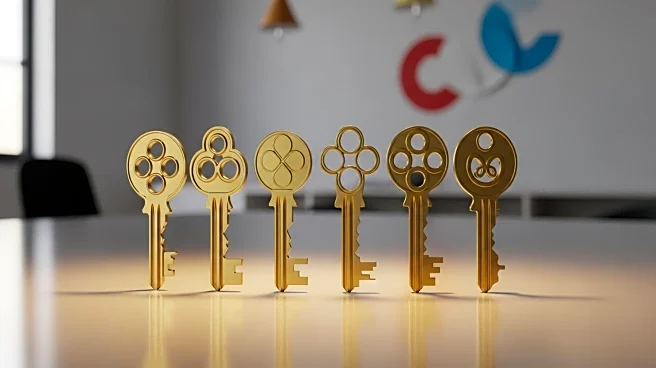What is the story about?
What's Happening?
Empathy has emerged as a crucial component of effective leadership, particularly during times of organizational transformation. Estelle Eades, a change management expert at Project One, emphasizes that empathetic leadership helps build trust, navigate resistance, and foster an inclusive environment. By understanding and sharing the feelings of employees, leaders can create a culture of psychological safety, enhancing adaptability and engagement. Empathetic leaders engage in active listening, transparent communication, and support employee wellbeing, which are essential behaviors for driving successful change. This approach not only addresses the human impact of decisions but also strengthens commitment and resilience among employees.
Why It's Important?
Empathetic leadership is vital for organizations undergoing change, as it directly impacts employee engagement, collaboration, and resilience. Leaders who prioritize empathy can reduce resistance to change, improve teamwork, and enhance overall performance. This leadership style is linked to tangible business benefits, including higher employee motivation and lower friction during transformation efforts. As companies face increasing challenges in adapting to new technologies and processes, empathetic leadership provides a framework for managing change effectively. By integrating empathy into leadership practices, organizations can build a culture that not only adapts to change but thrives in it.
Beyond the Headlines
The emphasis on empathy in leadership highlights a shift towards more human-centric management practices. This approach challenges traditional leadership models that prioritize efficiency over employee wellbeing. As empathy becomes a recognized driver of success, organizations may invest more in leadership development programs that focus on emotional intelligence and interpersonal skills. Additionally, the growing importance of empathy may influence corporate policies, encouraging more inclusive and supportive work environments. This cultural shift could lead to long-term changes in how organizations approach leadership and employee relations, ultimately impacting industry standards and expectations.
AI Generated Content
Do you find this article useful?













